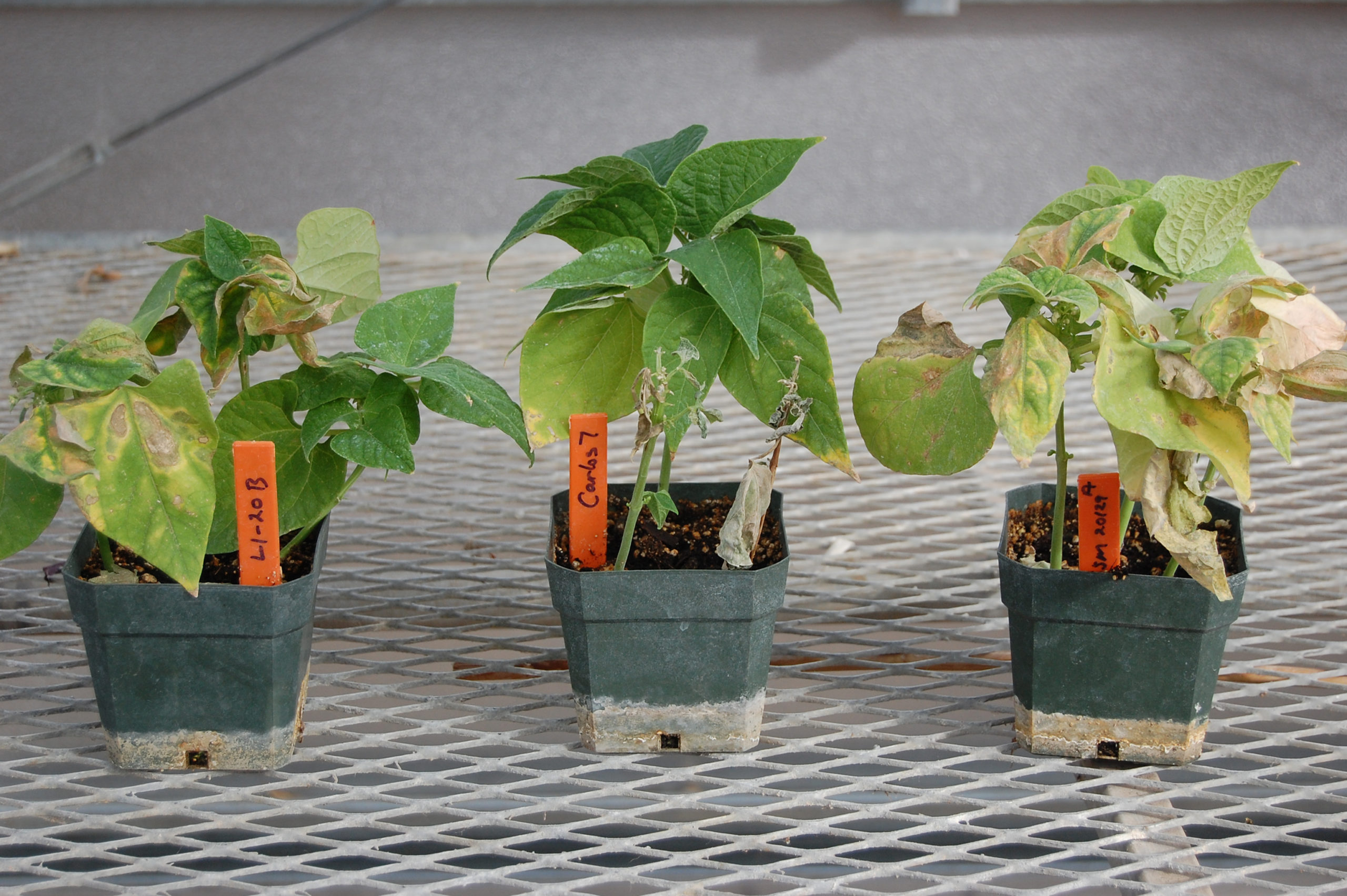![]()

By Robert M. Harveson, Extension Plant Pathologist, University of Nebraska Panhandle REEC
The Panhandle Research Extension and Education Center (PREEC) plant pathology program will continue conducting several new projects on diseases of dry beans and pulse crops. We have recently been awarded new USDA specialty crop block grants focusing on the efficacy of several new copper alternative chemical products on fungal and bacterial diseases of dry beans, cowpeas, chickpeas, and dry peas. In another project, we will also collect Rhizoctonia root rot isolates found affecting these new pulse crops and evaluate them as potential pathogens on dry beans.
We are also participating in another unique project studying bacterial isolates initially presumed to be the pathogen causing bacterial wilt, Curtobacterium flaccumfaciens pv. flaccumfaciens (Cff), which were captured from the stratosphere. The stratosphere is the second layer of Earth’s atmosphere as you go up, just above the ozone layer. It is a layer ranging from 10 to 30 miles above the Earth. Commercial planes fly at 33,000 – 40,000 ft (6-9 miles), which illustrates the height of the stratosphere.
A group of microbiologists from Georgia and Florida were studying bacteria and other microbes that they had obtained from the lower part of the stratosphere with weather balloons. They discovered several cultures that were very similar to Cff. They contacted me to collaborate with them on the characterization of these isolates and compare them with our known plant pathogenic isolates from Nebraska.

Our role in this project has been to test a selection of these isolates for pathogenicity and virulence on dry beans under greenhouse conditions. We have received and tested now approximately 15 stratospheric isolates to date. This project is still ongoing, but we have determined that some of them are viable and capable of infecting and causing disease on dry bean plants in the greenhouse. However, those isolates are less virulent. They grow and cause symptoms much slower than some of our highly virulent Nebraska isolates.
After several additional preliminary tests, it has been established that at least one of these isolates we were working with is not Cff. It is thought now to be a new species of Curtobacterium. We are additionally proposing a name for that stratospheric isolate L6-1 as Curtobacterium aetheraea.
It is remarkable to me to think that any organism could survive the conditions that are present so high in the atmosphere (uv light and extremely low temperatures). Stay tuned! I will share more results as the project proceeds.
